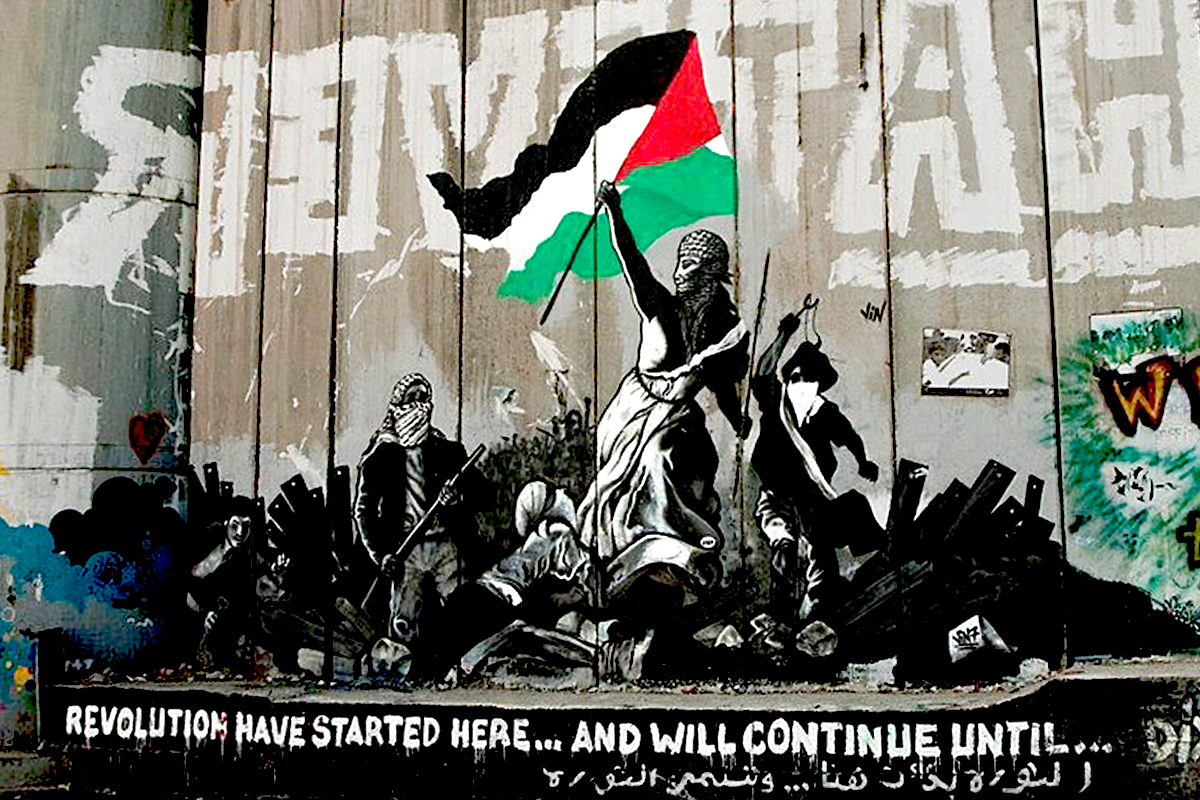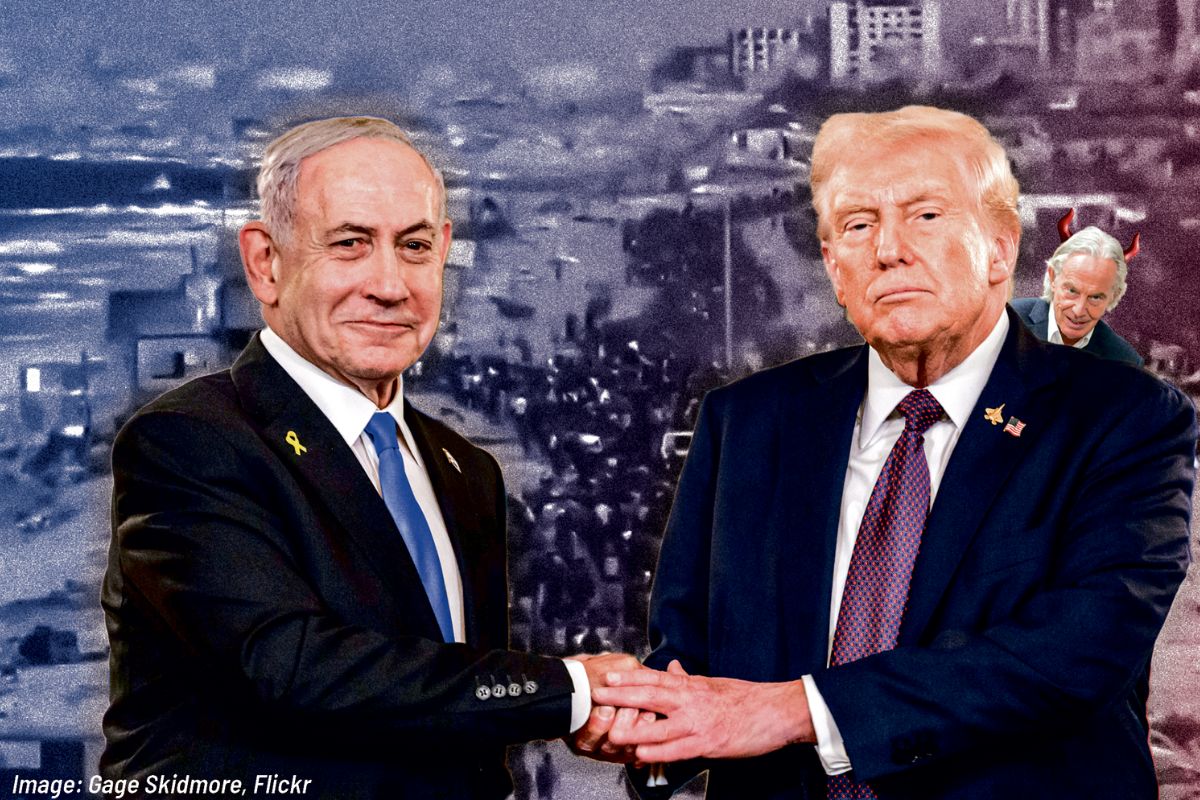The general strike that swept through Palestine in May 2021 was a breakthrough in the struggle. The vicious bombing campaign in the Gaza Strip – ‘mowing the lawn’, as it was euphemistically labelled – carried out by Benjamin Netanyahu for his own cynical, self-serving reasons, backfired spectacularly.
In the past, the Israeli ruling class had managed to seal off the resistance in Gaza or the occupied West Bank, and contain any trouble from spreading over to the Israeli ‘Green Line’.
Indeed, when a campaign of terror was unleashed by the IDF on the Gazan masses in 2009, 2012 and 2014, Palestinians in the West Bank were mostly passive spectators.
The struggle against the forced evictions in Sheikh Jarrah was one of countless lonely and local battles against the fanatical settlers.
Similarly, the Israeli ruling class saw Palestinians living within the Green Line, constantly harassed by the police and in fear of attacks, as a pacified force. They thought that the fragmentation of Palestinians would cut across any real attempt for them to resist.
In a word, the Israeli ruling class and their political lackeys supposed that they had mastered the dark arts of divide and rule; undermining the basis for a unified, mass struggle.
But not so, as the Palestinian general strike of 18 May 2021 demonstrated. The strike affected transport, deliveries, cleaning, and healthcare within Israel, and it was felt in all sectors where there is a larger presence of Palestinian workforce.
As reported by the Israeli Builders’ Association, only 150 out of 65,000 Palestinians building workers showed up to work, paralysing the building industry. Class methods were once again front and centre of the fight.
No matter what problems are blighting the Palestinian masses – whether it be equality and housing, salaries and jobs, or basic access to electricity and water – 18 May was a conscious acknowledgement that they are all oppressed in different ways by the Israeli state. And most significantly, it was led by the youth, who have no truck in their separate, sordid leaderships.
The main motor-force organising the strike were networks of self-organised committees and youth groups. These committees sprang up in spite of the passivity of the so-called leadership and, in many instances, openly challenged it.
Despite claims to the contrary, Hamas, Fatah, and the PA, were not the drivers of the movement, they were pushed by it.
Order your copy of ‘Israel-Palestine: A Revolutionary Way Forward’ – our new pamphlet from Wellred Books – here.
We are proud to announce a new series of in-depth articles on the topic of Israel-Palestine, putting forward a revolutionary perspective for Palestinian liberation, and lasting peace for the whole region.https://t.co/hQvLm0QjDB
— Socialist Appeal (@socialist_app) April 29, 2023
Betrayals
Palestinian youth are looking back to the past to draw fresh lessons thirty years after the Oslo and Madrid accords.
The significance of the First Intifada (Arabic for ‘shaking off’, or ‘uprising’) remains in popular consciousness for obvious reasons.
In December 1987, after 20 years of direct Israeli occupation, the Palestinian masses rose up with a wave of demonstrations, strikes, and riots across the West Bank, Gaza, and East Jerusalem that lasted for years.
The youth took control over neighbourhoods; shopkeepers closed their businesses; and the Palestinian working class refused to work in Israel.
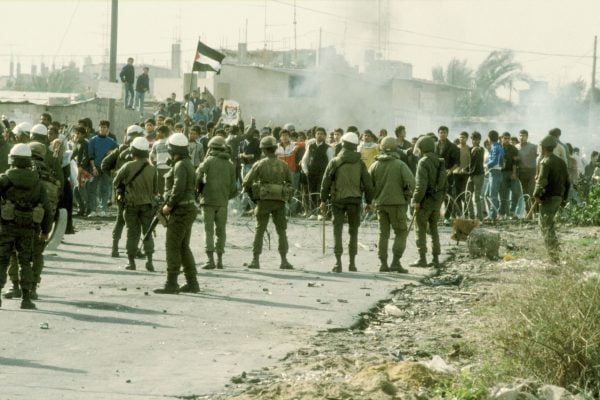
The Intifada was a revolutionary movement that took everyone – the Israeli ruling class, but also the leadership of the PLO (Palestinian Liberation Organisation) – by surprise.
The Palestinian uprising led to the formation of tens of thousands of mass committees, organising every aspect of the mass struggle against the occupation.
Mobilised was a force encompassing hundreds of thousands that were openly defying and resisting the power of the Israeli state, severely rocking the regime.
The situation was so unstable that US imperialism put pressure on the Zionist ruling class to pay lip service to a ‘two-state solution’. Everything had to be done to prevent a full-scale revolution.
The movement had run out of the control of the leadership, who were desperate to apply the brakes. As is always the case with bourgeois and petit-bourgeois leaders, the PLO and – at its core – Fatah, led by Yasser Arafat, had no perspective of socialist revolution in the Middle East. They therefore envisaged the Palestinian struggle through purely national lenses.
Arafat had no confidence in the power of the masses. In fact, he felt undermined by them and saw the bogus ‘peace process’ catered by US imperialism as an opportunity to regain his leading role.
The result was to divert the revolutionary power of the mass movement down the blind alley of the so-called two-state solution.
This culminated in the 1993 Oslo accords, which brought about the creation of the Palestinian Authority (PA). Rather than challenging the occupation, the PA took advantage of their new found status and links to the Israeli military command.
Corruption amongst the Fatah elite that filled the PA became rife. And yet, the position of most Palestinians was not improving. The occupation showed no sign of easing. This is what laid the basis for the Second Intifada.
Neither the Oslo accords, nor any of those that came after, are worth the paper they are written on. Today, the PA and Fatah are reviled by the youth. Their collaboration in the blockade of Gaza is a clear indication of where their true allegiances lie.
A single act of betrayal could seem like the individual fault of this or that leader. But this would be naïve to assume in the case of the PA.
The PA is totally economically dependent upon Israel – as is the decrepit Palestinian bourgeois.
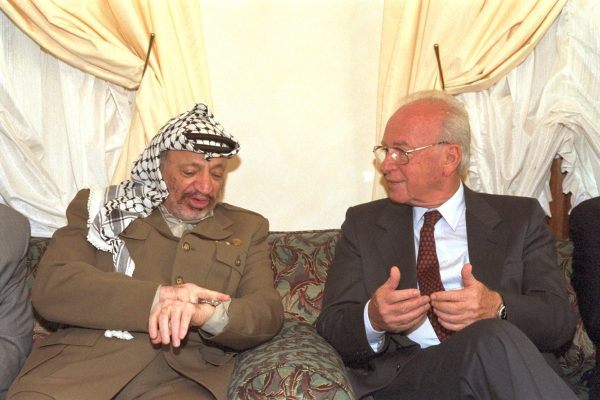
With the establishment of the PA, Palestinian nationalism has been put to a severe test, and failed. Arafat used his personal authority by leaning on the Palestinian masses’ militancy and trading it as a bargaining chip with Israel, while suppressing internal opposition.
After Arafat’s death, the continuous deterioration of the PA led to further chaos, with Hamas’ victory in Gaza in the January 2006 elections.
PA president Mahmoud Abbas has entered the 19th year of a four-year term, with presidential elections in 2009 cancelled to avoid defeat – and postponed ever since!
Abbas has overseen the complete capitulation of the PA, which now resembles more and more a dysfunctional local authority constantly on the verge of bankruptcy under Israeli occupation.
Abbas and his coterie of Palestinian capitalists have amassed considerable personal wealth thanks to this setup, while selling out the Palestinian national struggle.
It is inimical for these crooks to take the struggle past a certain point because it would begin to hurt their own interests. Nor should we expect them to.
In the end, struggles for national liberation always break down along class lines. The rich will always betray the poor.
Balance sheet
The humiliation following Oslo allowed for a buoy in popularity for Hamas. Indeed, Hamas profited from rejecting Oslo, and masqueraded as an anti-imperialist force for a period of time.
This was buttressed by the ‘international community’ declaring Hamas a ‘hostile entity’ after it won the elections in Gaza – something that the hubristic US never thought possible.
In the absence of a revolutionary alternative, Hamas has positioned itself as the only force capable of challenging Israeli imperialism. But it does nothing of the sort.
Hamas is a reactionary religious movement that aims to direct the struggle as one between Jews and Muslims. In this way, political reaction on both sides leans on one another.
The Zionist ruling class could not have been delivered a better gift than Hamas draping the struggle of the Palestinians in the language of religious fundamentalism. This is a game that they know all too well how to play.
For every rocket launched, or suicide bombing, Zionism is strengthened. The Israeli ruling class is able to sound the air raid sirens; create a siege mentality; and whip up a nationalist frenzy at home to convince Israeli workers that Palestinians present a mortal threat.
Hamas’ delusions of defeating Israel militarily has been an ace up the sleeve for the Israeli ruling class.
The strategy of individual terrorism, bombings, kidnapping, etc. have proved sure-fire ways of burning through the best elements of the Palestinian youth. And most importantly, it poses no genuine threat to Israeli occupation – and never did.
It should come as no surprise that Mujama Al-Islamiya, the Muslim Brotherhood in Gaza which gave birth to Hamas, was allowed to prosper by Israeli intelligence for decades.
It was also nurtured by reactionary Islamic fundamentalist trends throughout the region as a means of fighting against the left currents in the national liberation struggle. To this very day, it is aided and abetted by reaction in the region, such as Iran.
It is linked therefore to the goals of these regimes, all of which are co-responsible for the Palestinians’ plight.
These methods have been tried and failed before in countless national liberation struggles. They fundamentally reflect a petit-bourgeois approach to the struggle, from which conspiratorial methods flow.
If all that is necessary to defeat the Zionist state is an incendiary bomb or a rocket, why should the working class strike, or organise at all?
Such methods only serve to lower the consciousness of the working class in the region, instead of giving workers a sense of their collective strength, thus consolidating the power of reactionary formations, such as Hamas.
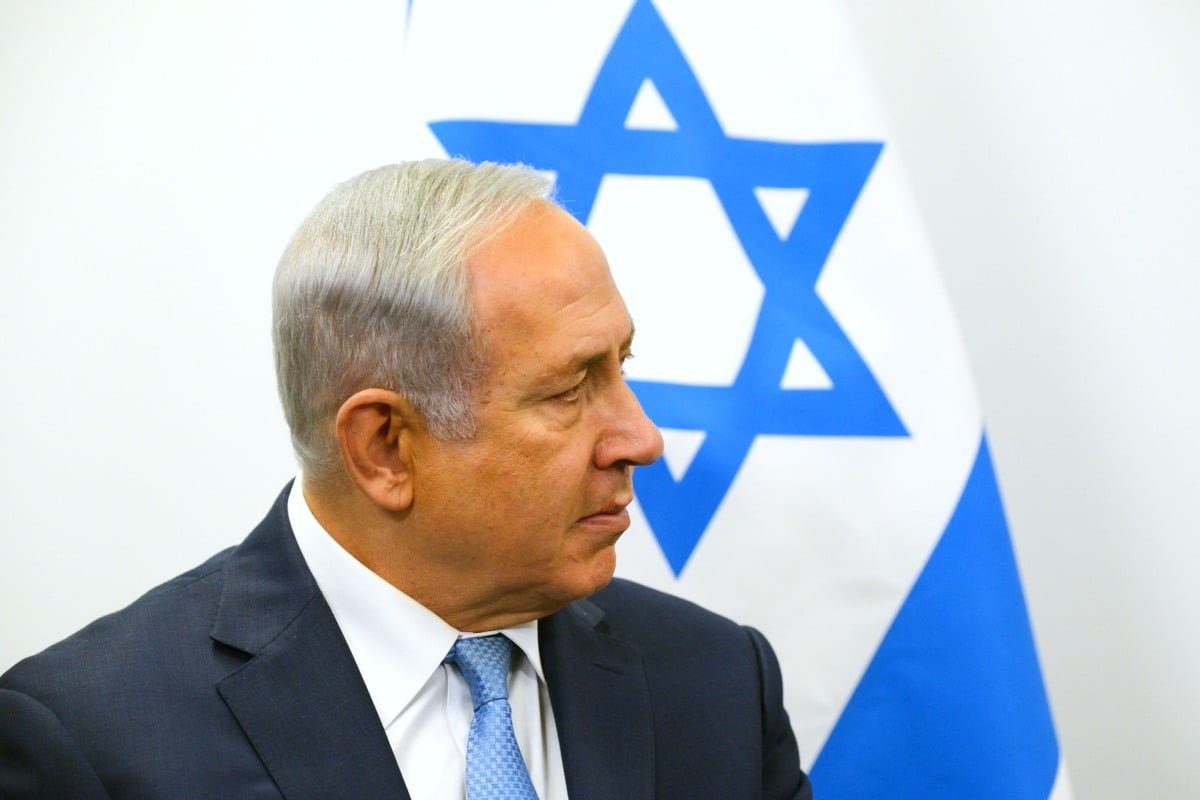
Fetishising the military aspect of struggle, and subordinating to it the need for a political programme which can draw behind it all those oppressed by the iron fist of the Israeli ruling class, has spelled tragic consequences.
The tactic pursued by Hamas reflects an intentional quest to cut across the class struggle; a fear of the organised power of the working class, who would not stop at throwing out the corrupt Israeli state, but as a prerequisite, must rid themselves of their own corrupt ‘leaders’.
Fatah and Hamas seem as far removed from one another as black and white. Their difference, however, relates to form and not content.
Between brokering clever deals within the parameters set out by the Israeli state; to a guerrilla struggle against the state to achieve one’s ends, there is no role for the only force which is alone capable of carrying the revolutionary struggle to victory: the organised working class, which both Fatah and Hamas are heavily suppressing.
Like Fatah before it, Hamas has aimed in recent years to strike deals with the imperialist powers. This has been blocked by Israel for political reasons.
The Israeli ruling class routinely uses the muted resistance – in the form of rockets shot down by the Iron Dome – to distract from problems brewing at home.
In spite of this, just as the washed up PLO leaders changed their uniforms from military attire to silk suits, it is not ruled out that Hamas will take steps in this direction if the opportunity presents itself.
Millions realise that Hamas is interested in Palestinian liberation in nothing beyond words. The mask has slipped. For the most radical Palestinian youth, they see the abject failures of yesterday.
The Palestinian national struggle had its highest impact when embedded in the revolutionary movement of the Arab and Palestinian masses against Israeli occupation, the Arab capitalist regimes and imperialism.
This was drowned in blood with the Jordanian Black September in 1970, and with the Lebanese civil wars in the 1970s and Israeli and Syrian invasions of Lebanon.
The revolutionary power of the masses broke through again, in spite of Israeli occupation, with the First Intifada.
In all these instances the revolutionary opportunity was wasted by the Palestinian leadership. This is because they have failed to adopt a real revolutionary programme, and failed to base themselves on the only progressive class in society: the working class.
This is the key to liberate Palestinians and overthrow the Israeli state.
Friends of Palestine?
The so-called democratic regimes in the West know what side they are on. For the most part, they do not even feign support for Palestinians. Instead, they equivocate blame between the oppressed and the oppressor.
They have no scruples with the open air prison which keeps two million captive in Gaza. All their talk of a two-state ‘solution’ is a cynical smokescreen, nothing more.
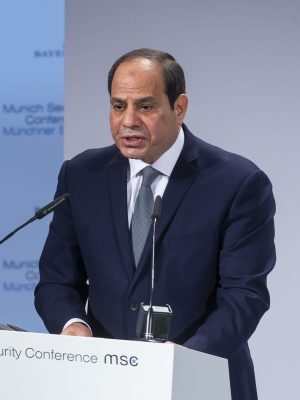
We should also have no illusions in the self-styled ‘Friends of Palestine’ either. Whenever there is a flare-up, the Arab regimes and other regional powers scramble to play some role in brokering ‘peace’.
The reasons for this are twofold. Firstly, there is an importance in keeping up appearances, and giving these regimes that ruthlessly exploit their own working class a progressive veneer.
We see this clearly in Algeria, where the crooked regime used the pandemic to clamp down on the magnificent 2019 Hirak movement that ousted its ailing President.
Under the auspices of fighting the virus, the Tebboune government incarcerated those that posed a threat to the status quo. And yet, once the bombardment began on Gaza, the Algerian state not only allowed, but even sanctioned protests to take place. This was a mere safety valve to allow the Algerian youth and workers to let off some steam.
This leads to the second reason. These fragile regimes cannot tolerate the building of a unified mass movement in Palestine. Such a movement would invariably spill across the region and stir the mass struggle against these same regimes at home.
These cynical calculations are best illustrated by looking at the examples of Egyptian and Jordanian ruling class.
In order to not stand against the popular outpouring of sympathy, Sisi’s regime postures as a peacekeeper. This is the same reactionary regime that is an active agent in the blockade of Gaza, which has seen thousands perish due to preventable disease and famine.
In the same vein, the royal family of Jordan often condemns the excessive force used by the Israeli Defence Force. Yet this is the same royal family that carried out one of the largest massacres of Palestinians in Black September 1970, and continues to act as Israel’s border guard on the West Bank.
With friends like these, who needs enemies?
While both regimes pay lip service to the Palestinian cause, we must not conflate their narrow self-interest in brokering deals with the real solidarity from the masses.
The attempt for the Jordanian workers and youth to storm the border during the 2021 bombardment was stopped by the Jordanian King. The message was clear: get off the streets, leave it to the professional politicians to make the deals!
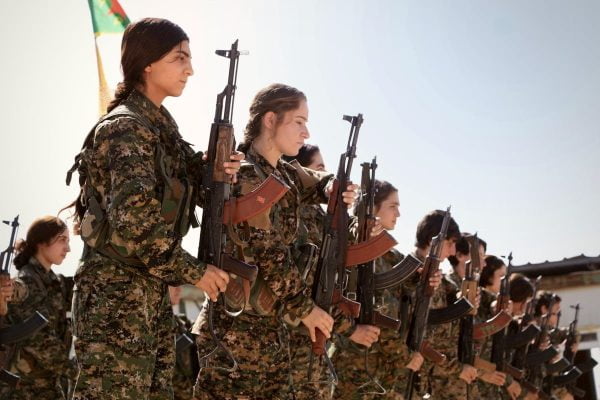
In fact, all the imperialist nations – in the region and beyond – use the plight of the poor and oppressed in the region as a political football to gain concessions that serve their parochial interests.
The inspirational Kurdish struggle for national liberation bears lamentable witness to this fact. After the US used the Kurds as a handy tool in its intrigues against Assad, they were left high and dry when the western imperialists needed to break bread with Erdogan.
The US and the EU paid for Turkish concessions to the West in Kurdish blood. Such is the solidarity of the ‘international community’!
In truth, the Kurds and Palestinians will always be small change in the machinations of larger imperialist powers unless the masses rely on their own strength, and appeal to all oppressed strata in the region to overthrow capitalism.
The only friends of the Palestinian cause are the revolutionary youth and workers of the world. No solutions brokered in the corridors of power will bring liberation one centimetre closer. That question can only be resolved on the streets, by revolutionary means.
Revolutionary ferment
The revolutionary movements that rocked all Arab regimes in 2011, the so-called Arab Spring, was a foretaste of what lies ahead in the region.
It was the most definitive proof that when the masses move against the powers that be, there is not a force on earth able to stop them. No security force surveillance or secret police infiltration could hold back the tide of revolution.
In country after country, we saw the masses overcome all obstacles. Without a plan, preparation, or even an organisation behind them, the workers and youth overcame their feelings of helplessness and took their destinies into their own hands. The Arab masses stormed heaven, to borrow Marx’s expression.

Lacking revolutionary leadership, however, power was left lying in the streets. The bourgeois and petty bourgeois elements that came to the fore blazed a path of bitter betrayal. They manoeuvred from above as the masses eventually ran out of steam.
The uprising in Egypt ended in a brutal counter-revolution; the ‘democratic transition’ in Tunisia changed precious little; and the bloody wars of attrition in Yemen and Syria have sent these countries into a barbarous state.
Though a decade has passed since the Arab Spring, none of the burning class questions thrown up by the revolutions have been resolved. These struggles were a reflection of the global crisis of capitalism, which has only intensified and deepened in the last twelve years.
More recently, the pandemic turned the world upside down, bringing into sharp relief the class divide in society. The life that the youth of today will inherit is considerably worse after a decade of austerity and privatisation.
The struggle to transform the region is far from finished. All the movements cut across by the pandemic are coming back with a vengeance.
The youth have been in revolt in Algeria, Tunisia, Lebanon, Jordan, Iran, Iraq, and Turkey in recent years. The entire Middle East and North of Africa are beset by the preconditions for revolutionary struggle.
This has not gone unnoticed by the despotic rulers in the region. They are fearful of the implications of this getting out of control.
Drive a wedge
This revolutionary wave, and in particular the Egyptian revolution against Mubarak, was felt within Israel itself, stirring a mass movement around the questions of the high unemployment rates of the youth and lack of affordable housing.
This movement involved a large section of the Palestinian minority, along with Israeli Jews, who could be seen brandishing placards that read ‘Fight like the Egyptians’. This was significant enough to sound alarm bells for the Zionist ruling class.
Indeed, since 2008, the economic and political crisis has sharpened in Israel. Each and every reactionary coalition at the Knesset has been forced to rely on the divide-and-rule playbook ever more.
Whenever there are problems mounting at home – and we must remember, Israel is one of the most unequal countries in the advanced capitalist world – they ratchet up their racist rhetoric; whip up violent provocations against the Palestinians; and beat the war drum.
But the recurrent massacres in Gaza, alongside all their manoeuvres, are coming increasingly from a place of weakness, not strength.
It would be naïve to assume that Israeli society is not wracked by the very same issues – housing, education, jobs, healthcare – as others in the region. This is why the Arab Revolution reverberated in Israel itself.
It is the task of all revolutionaries in the region to expose the divide-and-rule tactic of the Israeli ruling class; and aim to drive a wedge between the Zionist state and ordinary Israeli Jews, who in the last analysis suffer at the hands of the same oppressive system.
Engels once wrote that: “A people that oppresses another cannot emancipate themselves. The power that is needed to oppress others always turns against itself.”
This is entirely applicable to the conflict in question. To give but one example, in 2020 Israeli Jews and Palestinians took to the streets against Netanyahu and the corruption of the Israeli state. The very border police that were sent in to bring about ‘law and order’ were the same forces brutalising Palestinian worshippers routinely at the Al-Aqsa mosque.
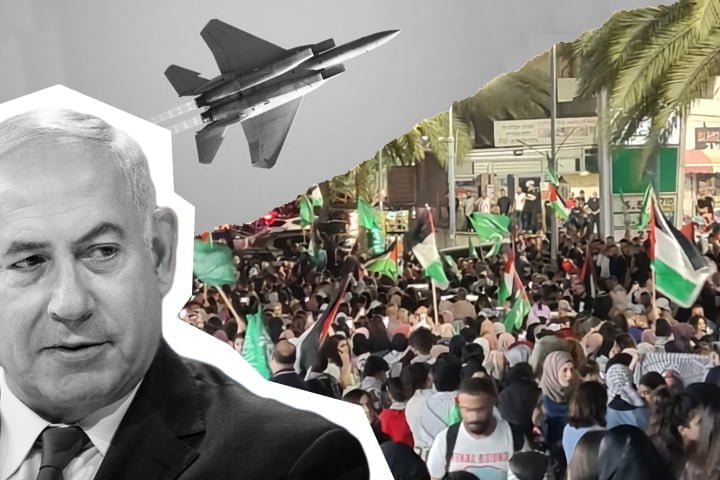
The continued occupation is a tool used by the Israeli ruling class to divide the working class of the region and play them off against each other. Zionism and fear-mongering over the Palestinians is used by the Israeli capitalists to blur the divisions between Jewish workers and capitalists, suggesting that they have the shared interests, which must be cut across.
The leadership of the Zionist trade union confederation Histadrut in Israel plays a shameful role, playing second fiddle to the Israeli state on these questions, rather than pointing out the solidarity that should be built between working class Israeli Jews and Palestinians.
The first prerequisite for any kind of solidarity would be to throw out these leaders and their class-collaborationist policies, and all their other prejudices too.
The poison of nationalism and sectarianism is a powerful force in the conflict. But as has been shown time and time again, the only successful way of breaking down such animosity is by driving a wedge between all the oppressed layers of society and the oppressor. It means breaking Israeli society down along class lines.
Some assume that the ill-feeling between the Jewish Israelis and Palestinians is too intractable or deeply ingrained to ever be overcome.
The same naysayers said as much of the sectarianism between Catholics and Protestants in Ireland. But the leadership of James Connolly and Jim Larkin, two giants of the Irish struggle, furnish us with ample proof of exactly how this is to be undone.
Both Connolly and Larkin understood that a successful struggle for a socialist Ireland must unite workers on class questions, relying on their own strength: their own methods, ideas and tactics. And just as this was the only way forward then, it remains so till the present day.
The main weapon upon which England relied to destroy the Irish revolution was the fomenting of divisions between Catholics and Protestants. The main weapon wielded by these Irish revolutionaries was exposing the narrow limits of Irish nationalism and the reformist lackeys of British imperialism. Connolly in particular placed internationalism front and centre of his politics.
By not pandering to the deep-seated divide, itself a product of imperialism, they were able to weld together the workers into a battle-hardened class. This, and this alone, was capable of undermining the menace of sectarianism.
And this is also a precondition for uprooting Zionism from the Israeli workers’ movement, and overthrowing the Israeli ruling class.
In truth, past leaderships of the Palestinian struggle have played into this sectarian split. These failed strategies must be ditched, in order for new left currents to emerge within Palestine, free from the religious fundamentalism of the self-styled leaders.
Intifada until victory!
The existence of the Zionist state based on Palestinian oppression can only be a ‘bloody trap’ guaranteeing an undignified life for the oppressed Palestinians, as well as for the Israeli Jews. This is a problem that cannot be solved on the basis of capitalism.
The whole history of the region proves, however, that revolutionary struggles can – and will – seriously shake the foundations of sand upon which imperialism dominates and the dictators rule.
The spiral of reaction will be interrupted by new revolutionary upheavals. Palestine will continue to be a reference point for the struggle in the region.
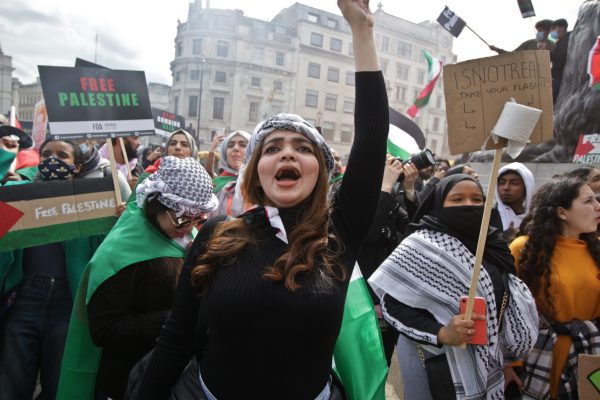
The final impetus, however, for overthrowing the Zionist state could also come from revolutionary developments elsewhere, such as Jordan (where the majority of the population are Palestinian).
It is not a question of whether or not there will be revolutionary movements. The workers and youth will not take their exploitation and oppression lying down, as has been proven time and time again.
When the working class moves, internationalism quickly becomes the lifeblood of the struggle, as we saw in the Arab Revolutions in 2011.
But for any revolutionary worker or youth who does not want to sit around ‘waiting for the revolution’, there is still a clear task at hand.
The key to successful struggle will be in the building of revolutionary leadership capable of using every injustice of the Israeli state, and the hypocritical pose of the Arab nations, to build working class solidarity.
The fight must be based on class methods, cutting through the fog of nationalism and sectarianism. It is only in this way that we can shield the working masses from being led down the blind alley of defeat by reformist, or even reactionary, leaders.
The Palestinian general strike of 18 May 2021 showed the potential of the Palestinian masses’ unified class struggle. Similarly, the struggle in Sheikh Jarrah and the community in the inner cities in East Jerusalem through direct, militant action has proved more effective in fighting settlement projects than any Hamas rocket ever could.
This has been a step in the direction of mass struggle – and it must be built upon.
The youth are rising up against the crumbling edifice of capitalism. In essence, these struggles – against corruption; for jobs, housing, education, democratic rights – are all the same struggle.
We are witnessing only the first tremors of a much bigger seismic event that will tear through the fault lines of the entire region.
It is on the basis of a socialist transformation of the whole blood-soaked region that any worker or radical youth must approach their struggle.
It is with this perspective that we put forward the solution of a federal socialist state of Israel-Palestine, as part of a Socialist Federation of the Middle East.
This is the only way of solving both national questions in the region, of which there is historical precedent.
Before 1917, there had been terrible conflict between the Armenians and Azerbaijanis. It was only through the Russian revolution that saw workers come to power – with socialist republics eagerly joining the USSR – that buried the sordid history of pogroms and persecution.
On the basis of economic growth, we saw distrust and ill-feeling between the peoples overcome. Mixed marriages became the norm, and rights for minorities were guaranteed. The basis for national oppression had been severely undermined.
Not by chance, as the collapse of the USSR drew close, enmity between the people deepened. This reached fever pitch after the dissolution of the Soviet Union, with a war breaking out over disputed land.
There is an important lesson in this. Everywhere we look, the restoration of capitalism resulted in national and ethnic divisions becoming ubiquitous. Each and every national capitalist oligarchy that climbed to their positions of power through looting the planned economies stoke these divisions for their political ends.
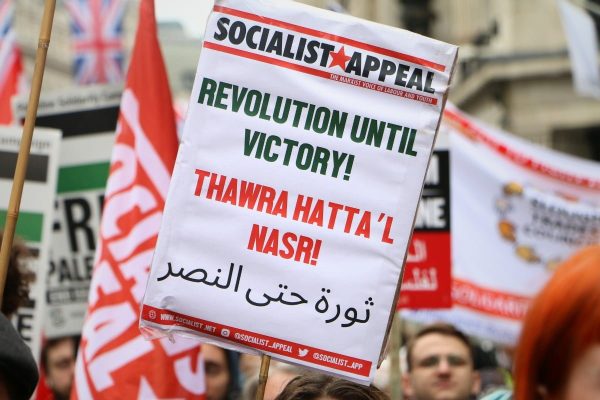
They play different sections of the working class off one another. There are no guarantees for the rights of minorities. And ethnic conflicts have since been aggravated between class brothers and sisters.
In a word, a Socialist Federation of the Middle East is the only way of guaranteeing autonomy of the Jews and Palestinians that is not based on oppression.
The festering problem of the right of return to all those displaced and dispossessed can only be eliminated by destroying the menace of Zionism. The precondition for refugees to be let out of their squalid camps and return to dignified conditions is for the Israeli regime to be overthrown, and replaced by a socialist state.
The pooling together of the resources under an economic plan – under the democratic control and management of the working class – would provide the basis for rapid economic development to take place.
Some will naturally scoff at this idea. They will opine that it is not ‘practical’ and we must be ‘realistic’. But it is precisely the ‘realistic’ politics that have led us to a ‘practical’ blind alley.
This brings to mind the words of James Connolly:
“Don’t be ‘practical’ in politics. To be practical in that sense means that you have schooled yourself to think along the lines, and in the grooves that those who rob you would desire you to think.”
Only with a marked break from the failures of the past can we be clear on the tasks for the future. Only on a socialist basis would a solution to the problems of jobs, housing, and healthcare be found. Only on this basis could the national question be solved, leading to the harmonious collaboration between all the peoples and nationalities of the Middle East.
Our slogans must be:
- Down with the Israeli occupation!
- Down with capitalism and imperialism!
- Intifada until victory!
- For the unity of the struggle of the workers and youth of the region!
- For a Socialist Federation of the Middle East!

